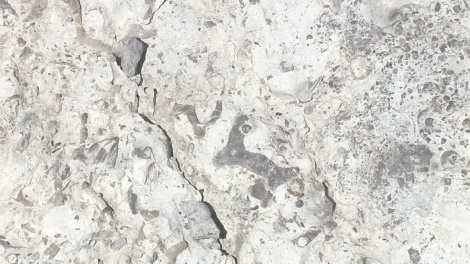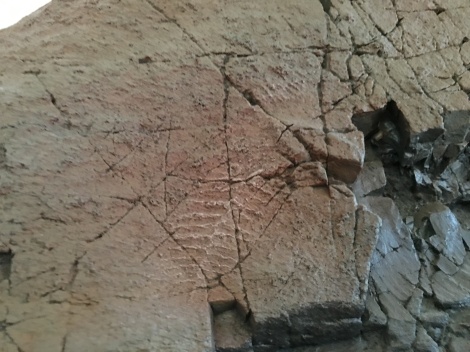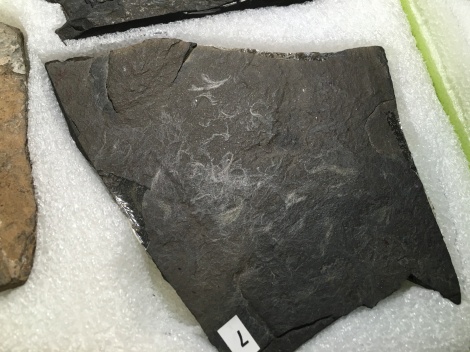Today I was wondering what I should write about. I realized that although I want to share the curious world of fossils with strangers, I hadn’t yet defined fossil ‘types’ for anyone just reading this casually. I have however posted images of trace fossils, molds &casts, and I did promise on the homepage that there would be some reference material.
Granted, I thought I was presenting my curiousities in a manner than anyone could read, I didn’t start at the basics. I am going to assume at this point that everyone knows that fossils are organic remains and have been frozen in time for a long period. The time depends on which fossils they are. So the dates vary quite a large deal, I can get into time scales in another post. Not all fossils are of extinct species. Not all fossils are ‘lifeforms’. So let’s start with some brief definitions. I have some photos at the bottom.
Trace fossils can the markings or excretions left behind by a critter. This includes everything from cute footprints -to- tunnels/burrows -to- digestive enzymes -to- poop.
Molds and casts are pretty self-explanatory. An impression is made and then filled in with sediment. This is pretty common, we use this technique in manufacturing.
Replacement or recrystallized fossils can be from soft or hard tissues of an organism. Minerals replace the tissue and can leave replicates of the original organism. We commonly see this in ammonite jewelry in gift-shops… or actually a great majority of fossils that come to mind is most likely a replacement or recrystallization of some sort.
Petrified and permineralized fossils occur in petrified wood as an example. Minerals fill in the porous spaces. I have petrified wood, I should get some images up in the gallery for you later this week.
Carbonization process of fossilization leaves only a silhouette, this occurs only in carbon-heavy, thin, organic materials. Similar to adpression where a plant is pressed in between two hard surfaces, one side gets the impression and the other side gets the silhouette.
Amber fossils, think of Jurassic Park but real, samples are trapped in the tree sap and the sap hardens around it.
Original material fossils, when a Mammoth gets flash-frozen in a glacier or mummies are petrified are the most common examples that come to mind.
I know today wasn’t too exciting. I hope adding some new pictures in will make up for that! I have a lot of great memories trying to figure out what everything is below. I was going to label them for you but thought I would just leave the locations. How were these fossils made? How many can you name? Do I have examples of everything I discussed? Comments are open, I think.

#1. Photo Credit: Jenny Ward

#2. Rock Glen Conservation. Photo Credit: Jenny Ward

#3. Rock Glen Conservation. Photo Credit: Jenny Ward

#4. Rock Glen Conservation. Photo Credit: Jenny Ward

#5. Rock Glen Conservation. Photo Credit: Jenny Ward

#6. Rock Glen Conservation. Photo Credit: Jenny Ward

#7. Rock Glen Conservation. Photo Credit: Jenny Ward

#8. Near Formosa, Ontario Roadcut. Photo Credit: Jenny Ward

#9. Rock Glen Conservation. Photo Credit: Jenny Ward

#10. at the ROM, Cast Mistaken Point. Photo Credit: Jenny Ward

#11. Cast of Mistaken Point at the ROM. Photo Credit: Jenny Ward

#12. At the ROM. Photo Credit: Jenny Ward

#13. At the ROM. Photo Credit: Jenny Ward

#14. At the ROM. Photo Credit: Jenny Ward

#15. At the ROM. Photo Credit: Jenny Ward

#16. At the ROM. Photo Credit: Jenny Ward
